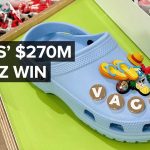The stock market has predicted nine of the past five recessions, the late economist Paul Samuelson famously quipped. Is the futures market now erring similarly by pricing in six of the next three Federal Reserve interest-rate cuts?
Federal-funds futures settled Friday at levels consistent with a 3.75% to 4% target range for the central bank’s key policy interest rate by December, according to the CME FedWatch site. That is consistent with the median expectation of the Federal Open Market Committee’s Summary of Economic Projections, but for the end of 2025. For this coming December, the most recent projection from Chairman Jerome Powell and the rest of the panel released last month had a median projection implying three reductions of one-quarter percentage point, from the current target range of 5.25% to 5.5%.
The futures market further expects the first cut to come just after the vernal equinox at the conclusion of the March 19-20 FOMC meeting. No move is expected at the confab at the end of this month, but the market is all agog about the spring.
The notion that the Fed will begin to reverse monetary tightening is based on the hypothesis that inflation is slowing toward its 2% target while the economy’s strength is waning, especially as reflected by the labor market.
While the pace of price increases has indeed decelerated, monetary policy’s impact on aggregate demand arguably has been less than the loosening of supply constraints and the easing in energy prices. The labor market, if anything, shows signs of tightness with upward pressures on wages.
The employment report for December, released on Friday, provided grist for virtually every view on the economy. Nonfarm payrolls rose 216,000, about 40,000 above forecasts, but that was offset by downward revisions totaling 71,000 for the two preceding months. Taken together, the 165,000 average monthly increase in payrolls was roughly half the pace of mid-2022.
The latest increase in job rolls also was offset by a dip in the average workweek, by 0.1 hours to 34.3 hours. And while the unemployment rate (which is derived from a separate survey of households) held steady at 3.7%, that was due to a sharp drop of 676,000 in the labor force, which nearly matched the 683,000 decline in the number of job holders in this tally. As a result, the labor-force participation rate dropped sharply, to 62.5% of the adult population in December, from 62.8% the prior month.
Pay picked up, with average hourly earnings rising 0.4% in the latest month, matching November’s increase. Measured from a year earlier, wages rose 4.1% in December, which compared with the 4% rise in consumer prices in the 12 months through November (the latest number available). Real earnings have been recovering rapidly, however, according to Steven Blitz, chief U.S. economist at TS Lombard, after being sharply negative in 2022’s peak inflation.
Peering at the particulars, pay gains have been especially strong on the factory floor. Wages for nonsupervisory workers in manufacturing climbed 0.9% in December on top of a 0.8% bump in November, writes Joseph Carson, former chief economist at AllianceBernstein, on his blog. Those are the fastest gains for manufacturing pay in four decades, he points out.
Those sturdy rises can be traced to the United Auto Workers agreement with the U.S. auto makers. “Remember that the nonunion wage increase of 10% or more at
Toyota,
Honda,
Tesla,
and many others that followed the UAW agreements take effect in January, so substantial gains in manufacturing wages will continue,” he adds.
The easing in inflation so far has been in the goods sector. Core goods prices in the personal-consumption expenditures deflator, the Fed’s favored inflation gauge, are down at a 2.3% seasonally adjusted annual rate in the latest six months. That’s a much sharper rate of decline than in past periods of disinflation, such as during the pre-Covid economic expansion or throughout the 1998-2019 period, writes J.P. Morgan economist Daniel Silver in a research note.
Much of the improvement in the overall inflation rate can be traced to food and energy prices, which are influenced by “noneconomic” factors, he adds. Count among them record U.S. oil production and the easing of supply-chain constraints.
But Carson points out that the strong gains in manufacturing wages, along with steady increases in the service sector, should lift overall employee compensation costs by well over 5% in 2024. That pace of labor gains is inconsistent with inflation slowing to 2%, creating a dilemma for the Fed.
Rather than fulfilling the market’s expectations of a series of Fed rate cuts commencing soon, the biggest risk in 2024 is if the Fed eases prematurely, Mizuho Securities economists Steven Ricchiuto and Alex Pelle write in a client note. That would increase the odds of what they call a “hot landing,” rather than the much-hoped-for soft landing, with a sustained upward move in intermediate- and longer-term interest rates. The dollar could also tumble and trigger a reacceleration of inflation.
Thus, they anticipate the Fed remaining on hold longer than anticipated. For stocks, that would mean a rotation to value over growth “as the economy catches up to last year’s rally.” Meanwhile, the markets’ prediction of rate cuts would prove premature.
Write to Randall W. Forsyth at randall.forsyth@barrons.com
Read the full article here













